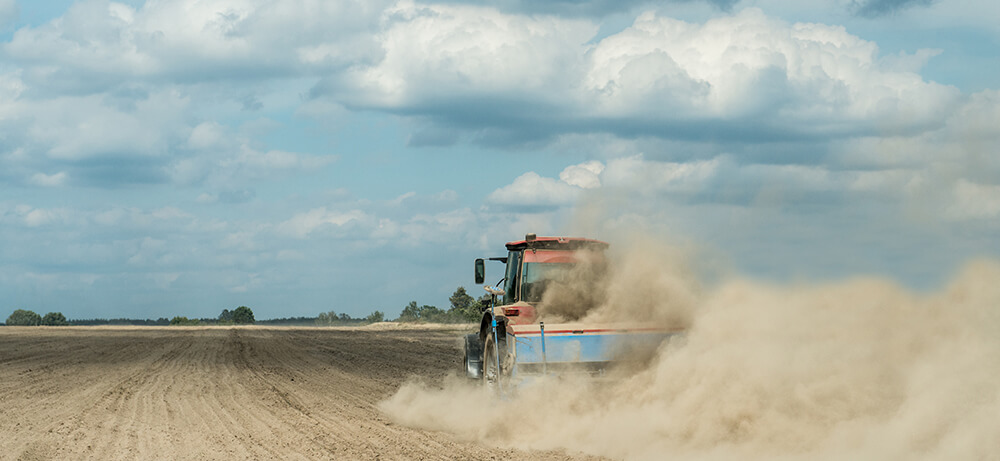Dryland Farming Relies on Water Conservation
Dryland agriculture is exactly what it sounds like. It’s a farming technique that cultivates crops without irrigation. Dry farming has been around for centuries, and farmers continue to build successful operations with these age-old methods. Some are even switching from more modern irrigated agriculture techniques to this sustainable alternative.
Wet seasons, dry seasons
Dry farming takes place in dry areas that typically have a season of cool, wet weather and a season that’s warm and dry. A significant rainy season is important to fill the ground with moisture. Crops will rely on water stored in the soil to grow during the dry season. If poor drylands farming methods are used, farmers are more vulnerable to damage from dust storms. It’s important to include a period without cultivation into the crop rotation for dry farming, This means the ground is not always protected by a cover crop and is more susceptible to erosion.

Moisture conservation
Dry farmers prioritize moisture conservation following the winter rainy season. To make the best use of the soil’s moisture content, farmers use wider spacing between plants and minimize the tilling in their fields. Strict weed control measures are in place because weeds steal water from the cultivated plants that need it. Efficiency is absolutely key for dryland farmers. They have to take advantage of precipitation in the wet season to help plants survive the growing season. Farmers prepare for years of drought by setting aside a portion of their annual profits after years of high yield.
Dry farming crop cultivation
Some dry farming crops can flourish with just a few inches of annual precipitation. The more annual rainfall an area receives, the more a large number of crop varieties will successful. Winter wheat, corn, beans, and watermelon are some popular products of dry farming. The timing of an area’s wet and dry seasons also factors into which crops you can cultivate with dry farming.
Farmers throughout the United States and around the world rely on drylands farming techniques. Dryland farmers rely on crop insurance to protect their investment. These operations must be able to survive occasional low yields and crop failures. Dry farming requires careful consideration of the crops you’re cultivating and the climate in which they’re growing. Farmers have to monitor moisture levels constantly to understand the crop cycle. To be successful as a dry land farm, you have to capitalize on the years with high yields and weather the years with a weak harvest.
Cost comparison
Irrigation costs are eliminated with dry farming techniques but other operation costs from drylands farming even it out. Although dryland farming produces lower yields than irrigated agriculture, many farmers are beginning to switch. Concern over water management systems and groundwater depletion have made it more difficult and more expensive to pump water into fields across the country. Dryland agriculture provides a solution to irrigation’s water problem.
Irrigated agriculture
Irrigated farming relies on controlled methods to supply the crops with water. Water is delivered to the crops through sprinklers, surface irrigation, and other systems. Throughout the growing season, irrigation regularly provides moisture that helps crops grow, prevents soil consolidation, protects plants from frost and suppresses weed growth in the fields. For thousands of years, farmers around the world have been using irrigation systems to maximize their yields. Today, farmers can pump groundwater faster than the rainfall can replace it. This means there’s less water available for cultivation.

Crop insurance covers both irrigated and dryland agriculture from droughts, low yields and loss of investment. With so much uncertainty, farmers are prioritizing finding the best insurance policy with the right amount of coverage. Whether you’re farming with dry or irrigated techniques, crop insurance prevents your finances from drying up.
